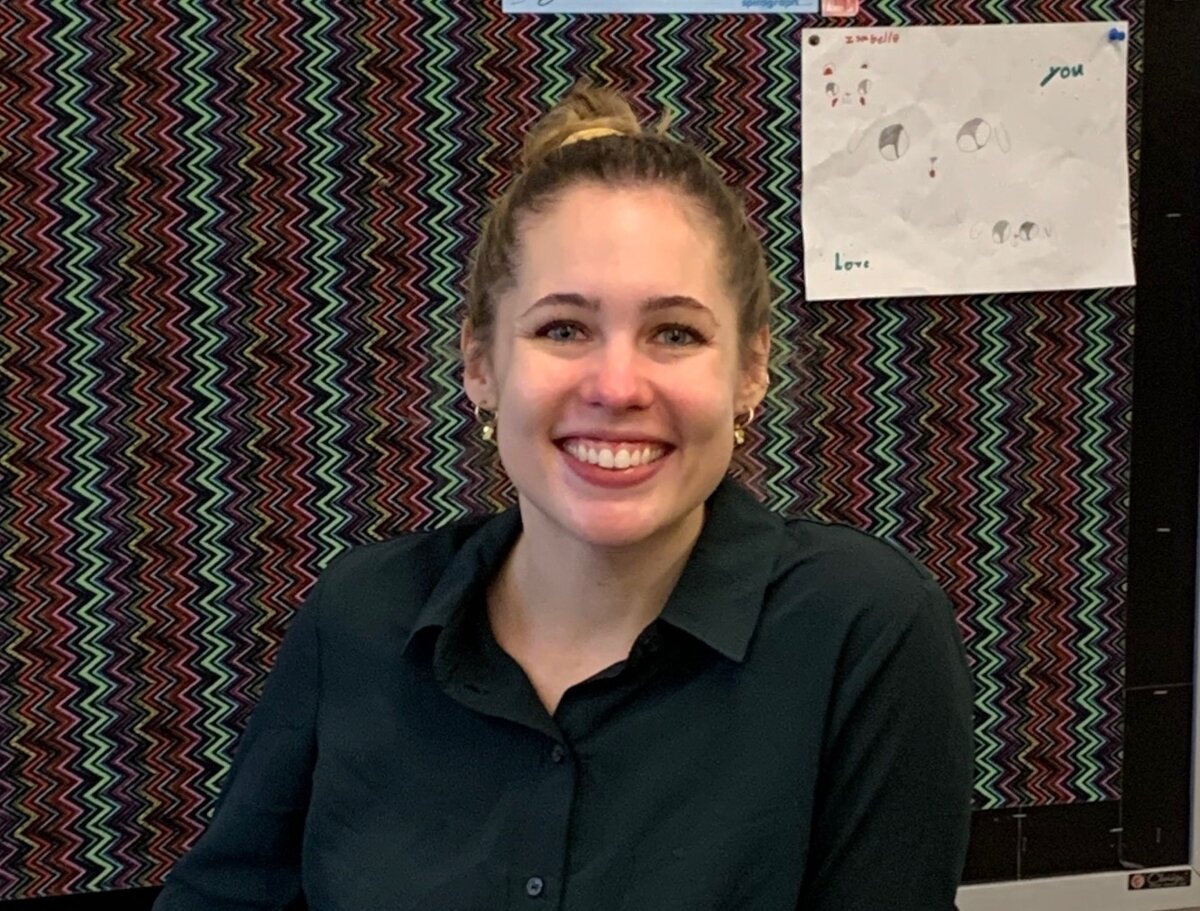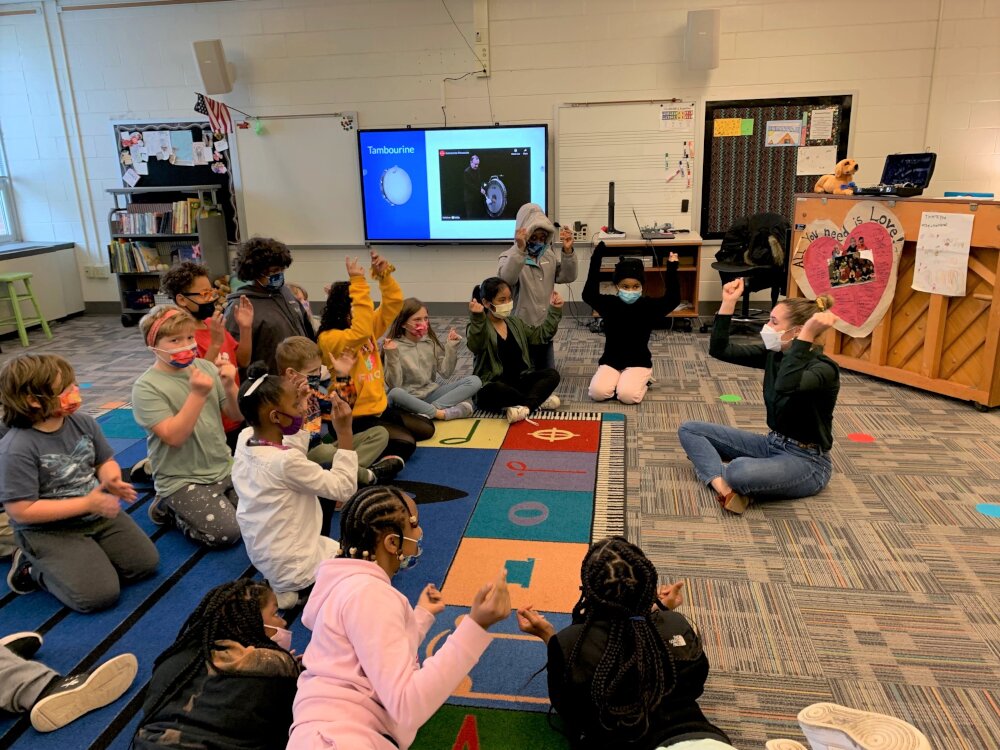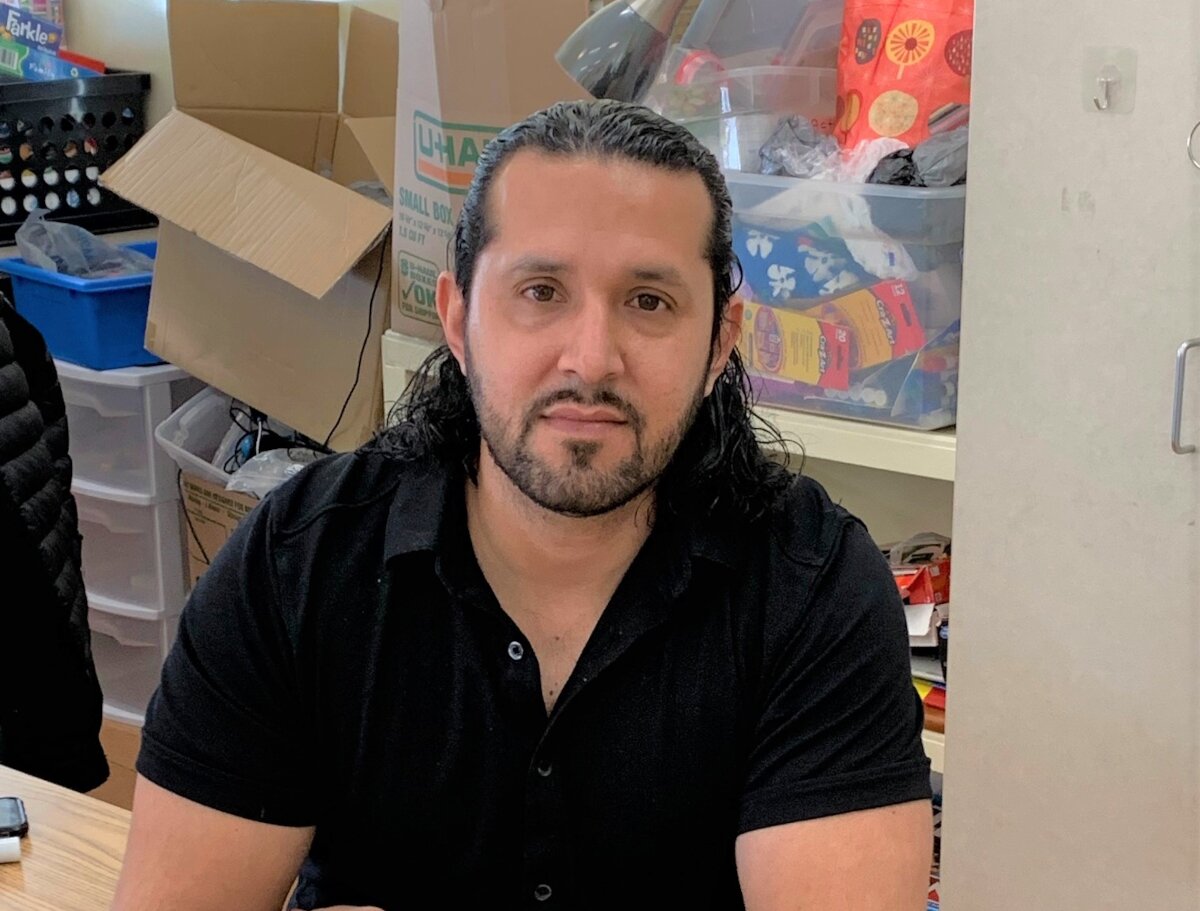
Educating in a Pandemic: Emily Kuchenbrod
By: Marley Schultz
Often times when we think of a teacher, we’re imagining those who help kids learn skills like math, reading, and writing. But what about music, art, and gym teachers? Their jobs also got more difficult during the pandemic, but their struggles looked different compared to traditional classroom teachers.
30-year-old music teacher at Kenwood Elementary School in Champaign, Emily Kuchenbrod said one of the hardest things throughout the pandemic was not being able to hear her kids sing during online learning sessions.
“Usually, we’re all singing together in the classroom, and even though they were singing, they were muted,” Kuchenbrod said. “Being able to have that instant feedback is nice because it’s a very aural skill.”
Now being back in the classroom, the availability of space and not being able to see kids’ mouths due to mask wearing are some of the current obstacles Kuchenbrod is facing.
“It’s difficult because a lot of choir skills, especially for young singers, are modeled by the teacher,” she said. “It’s not always as challenging musically as it is performatively, but there are times when I need to signal to take a breath or guide them visually with my face and it’s a tough thing to overcome.”
 However, Kuchenbrod earnestly shared how many good things came out of this stressful time. As a music teacher, she gets to see her students’ progress one year after the next and while they may be a bit behind due to the hardships of COVID-19, the curriculum grants a lot of freedom to meet kids where they’re at.
However, Kuchenbrod earnestly shared how many good things came out of this stressful time. As a music teacher, she gets to see her students’ progress one year after the next and while they may be a bit behind due to the hardships of COVID-19, the curriculum grants a lot of freedom to meet kids where they’re at.
The flexibility allows Kuchenbrod and other music teachers in the district to select projects and activities they think are fun and engaging that still pave the way to reach goals in creating, performing, responding, and connecting to music.
Through it all, she revealed how proud she was of her students’ abilities to remain resilient and enthusiastic about attending music class during their week, regardless of the learning model.
“The kids are so excited about music and they don’t even know how important that is,” Kuchenbrod said. “It continues to motivate me and makes me want to create a space that is one they can feel good about themselves in.”
Not only that, Kuchenbrod also expressed how much she learned about herself as a teacher while needing to adapt to her students’ needs and remembers significant instances that may have been small victories at the time, but would prove to broaden her knowledge in the long run.
“I did a lot of things last year that I’d never done in my seven years of teaching, just because I had never had the need, or even the time to do or explore them,” she said. “It was fun learning about different ways to connect with my students; it was a good challenge.”
Luckily, the challenge wasn’t just accepted by Kuchenbrod, but teachers everywhere, which made for a nice support system within the school. Teachers, administrators, students, and even parents have stepped up since the pandemic began in early 2020, and she described how the empathy for others across the board is genuine and prevailing.
“There’s a lot of compassion right now, regardless of your role, and we’re all having to step up and put a hand in to help the school run,” she said. “I get a lot of support from my administration and there’s a handful of people I’ll talk to when I need, even if it is just to vent.”
Most of all, though, the passion Kuchenbrod has for music and teaching the next generation of musicians is outwardly clear. With their good energy, quirkiness, and humor, the relationship between her and her students has held up through the pandemic and will continue to motivate her.
“I feel like I understand my kids more because I saw them in their home spaces and learned what their life is like when they don’t have school to come to,” Kuchenbrod said. “I keep the students at the forefront of my vision and that will always allow me to keep my head above water, even during the toughest times.”

Educating in a Pandemic: Luis Aguilar
By: Marley Schultz
The COVID-19 pandemic has been hard on everyone. Like many, those who are responsible for teaching our kids, especially the young ones, have faced a variety of obstacles in the last 18 months.
The world we were living in prior to March 2020, was one of say, blissful ignorance. No one believed they would live through a global pandemic lasting more than a year, and yet we’ve done it, thanks in part to those who have continued to do the work only they can do.
One of those people is Luis Aguilar, a 38-year-old fifth grade dual-language teacher from Argentina. Currently, Aguilar teaches at Leal Elementary School in Urbana and has been teaching there for last three years.
“My gift, I think, is wanting to help,” Aguilar said when asked about his interest in teaching. “If I can do it for kids and adults, why not?”
This academic year, Aguilar teaches two groups of 22 students, exclusively in Spanish. While he shares his students 50 percent of the time with an English language teacher, the
coordinated curriculum focuses mainly on grammar, reading, and writing. He also relayed that during his day, he prioritizes social emotional learning (SEL), as well as activities that expand students’ vocabulary and understanding of words and illustrations.
“One thing they’re not so good at yet is typing,” Aguilar said. “That’s why I set aside twenty minutes every day for them to practice and get better, but still have fun.”
 Along with the main elements of teaching, building relationships with students is oftentimes most valuable, especially when educators have the time to reflect on their own experiences.
Along with the main elements of teaching, building relationships with students is oftentimes most valuable, especially when educators have the time to reflect on their own experiences.
Aguilar expressed several times that he always wants to encourage students to talk, engage, and have fun with himself and one another because it helps keep them eager to learn and connect with the curriculum.
“When you know your kids and what they’re thinking, it’s easier to teach them and help them in other ways,” Aguilar said. “Otherwise, if you start to talk about things they don’t know about, my are they going to lose interest.”
Creating connections with kids wasn’t the only hard part about teaching during the pandemic. Aguilar said that the shift back to in-person learning was comparable to starting over because not only were the students used to being online, but so were parents and teachers.
However, that readjustment is on the come up. He said several times how promising the work effort has been from his students and in the spring semester he will continue to push student growth and move toward closing the learning gap.
“I’m so proud of the kids, after this pandemic, for deciding to come back and do the work,” said Aguilar. “They inspire me to work more with them and prepare them for middle school next year.”
Aguilar also mentioned his support system within the school and how helpful staff meetings have been throughout his time at Leal. He said that having the opportunity to talk to colleagues about certain situations going on from day to day that involve anything from grades tobehavior to emotional changes has been important and holds teachers to a level of awareness and communication that’s necessary, especially post-pandemic.
Regardless, Aguilar has pushed through it all and is constantly motivated by his students to keep doing the job because it’s what he loves.
“When you have the skill to teach, when you have the motivation and you know that a kid may someday become a president, a doctor, or even a teacher, you start thinking about how to help them,” he said. “Every time I ask one of them what they want to be in the future and they tell me, it only motivates me more to work with them; helping them helps me.”
